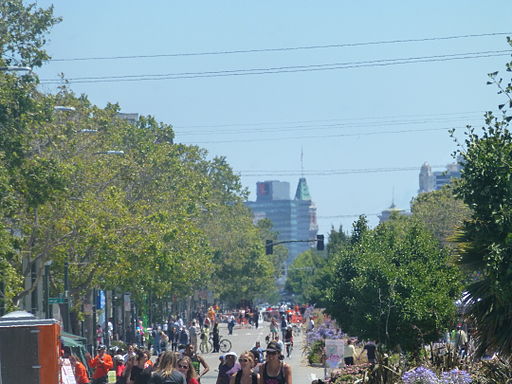Through the end of this month the Wikimedia community is electing 3 members of the Wikimedia Foundation board. You qualify to vote if you’ve made at least 300 edits before April 15 and 20 between October 15 and April 15 to any Wikimedia project.
If you don’t quality to vote, it won’t be hard to do so for next time if you get started now: Log in or create an account and be bold when you see a typo, incorrect or missing information in a Wikipedia article. Familiarize yourself with Wikipedia’s sibling projects; edits to any of them count. Play the Wikidata Game. I heartily recommend doing these things as a matter of learning and sharing knowledge regardless of desire to vote in Wikimedia elections or lower threshold and more fun votes such as for the Wikimedia Commons Picture of the Year. The current election is just an excuse for inserting this Public Service Announcement. ;-)
If you do qualify to vote, please do. I voted for Denny VrandeÄić and give him the strongest possible endorsement. I also voted for and endorse James Heilman.
The election uses approval/disapproval ratio to determine winners, so disapproval votes are powerful. I made a few but don’t want to publish because frankly all of the candidates are excellent and extremely qualified for a Wikimedia Foundation community board seat.
 The central issue in this election is evident in the Candidate statements, discussion, structured Q&A (1, 2, 3, 4), in a series of blog posts by Pete Forsyth (who was briefly a candidate but stepped aside), and outside the context of the current election, in blog posts by Lane Raspberry and Nimish Gautam., and the one message I’ve sent on the issue, which the first paragraph of VrandeÄić’s candidate statement sums up:
The central issue in this election is evident in the Candidate statements, discussion, structured Q&A (1, 2, 3, 4), in a series of blog posts by Pete Forsyth (who was briefly a candidate but stepped aside), and outside the context of the current election, in blog posts by Lane Raspberry and Nimish Gautam., and the one message I’ve sent on the issue, which the first paragraph of VrandeÄić’s candidate statement sums up:
Wikimedia is a modern wonder – and yet, it must change: most of our projects, as they are today, cannot truly succeed. To achieve our mission, we must increase the effectivity of every single contributor. At the same time, the communities are often seen as change resistant – but falsely so: they do welcome change, done right, as I have shown with Wikidata.
Along these lines, I especially commend VrandeÄić’s and Heilman’s answers to the following Q&A topics: Use of Superprotect and respect for community consensus, Retaining current volunteers versus recruiting new ones, Improving content, and Diversity and scope.
It’s commonplace for central organizations (of which I am a fan) to neglect or denigrate communities they serve, whether the relationship is one of collaboration, constituency, or consumption. Sometimes a version of neglect is even the right behavior, e.g., a product or project with some users may need to be EOL’d. But most organizations could do much better. It is essential that the Wikimedia Foundation do so, as the people who edit or otherwise contribute to the various Wikimedia projects are its key competitive advantage. If Wikimedia and other commons-based peer production projects are to stay relevant, nevermind helping achieve world liberation, they need to figure out how to become more effective, starting with embracing the idea that most of the vision and innovation needed to do so will come from the community, not the central organizations, and implementation done in partnership with the community.
…
Unrelated to the community issue, I’ve previously blog cheered VrandeÄić’s and Heilman’s work on Wikidata and Wikipedia/medical journal collaboration respectively.
…
Tangential ex-Wikimedia Foundation links:
I was very sad to read that Erik Moeller recently left the foundation, where he was Deputy Director. Though he seemed to endorse the organization/community vision dichotomy (my one message linked above is a mailing list reply to him), in my view he is perhaps the best example in the Wikimedia universe of community vision — he had written about and many cases prototyped most of the innovations the foundation is still working on implementing, many years later, before becoming an employee.
Moeller has since started a podcast, interviewing another ex-Wikimedia Foundation person, Sumana Harihareswara, for the first episode.
Harihareswara has two recent posts on Crooked Timber, Codes of conduct and the trade-offs of copyleft and Where are the women in the history of open source? I found them both very interesting and left comments.
Former Wikimedia Foundation Executive Director Sue Gardner is now “developing a strategic plan for and with the Tor Project” and separately researching “the broader state of ‘freedom tech’ — all the tools and technologies that enable free speech, free assembly, and freedom of the press.” That’s great news; Tor and other ‘freedom tech’ tools are incredibly exciting and important. But, a moment of critical cheering: as I noted around the time Gardner stepped down as WMF ED, I’m inclined to think that re-routing the knowledge economy is even more important than tools that can route around censorship for a good future. The former is what Wikimedia projects do.




